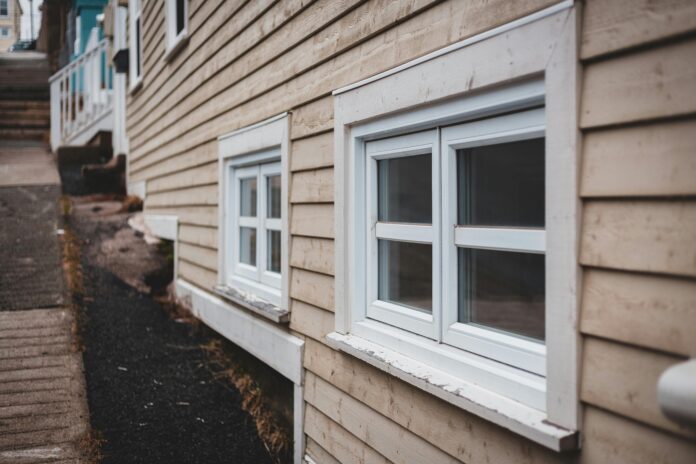Introduction
Selecting the right siding for extreme weather is essential for protecting your home against harsh conditions like high winds, heavy rain, intense heat, and freezing temperatures. Durable, weather-resistant siding materials such as fiber cement, engineered wood, and metal can withstand these elements, offering long-term durability, energy efficiency, and aesthetic appeal. This guide explores the best siding options for homes in challenging climates, comparing features, costs, and the unique benefits each material offers for extreme weather resilience.
Best Siding for Extreme Weather: Durable and Weather-Resistant Options

When choosing siding for extreme weather, it’s important to select materials that can withstand harsh elements like strong winds, heavy rain, intense heat, and freezing temperatures. Weather-resistant siding options such as fiber cement, metal, and engineered wood provide robust protection while maintaining your home’s insulation and aesthetic appeal.
1. Fiber Cement Siding
Fiber cement siding is widely regarded as one of the most durable and weather-resistant options available. Made from a mix of cement, sand, and cellulose fibers, this material is fire-resistant, impact-resistant, and highly durable. Fiber cement siding holds up exceptionally well against moisture, freezing temperatures, and high winds, making it ideal for homes in areas prone to hurricanes, heavy rain, and snow.
- Weather Resistance: Fiber cement is impervious to rot, insect damage, and extreme temperatures. It is also non-combustible, offering additional fire protection.
- Durability: With proper maintenance, fiber cement siding can last 30-50 years or more.
- Cost: Typically ranges from $5 to $10 per square foot, with installation costs adding another $6 to $10 per square foot.
- Best For: Regions with harsh winters, high wind areas, and wildfire-prone zones.
Installation Tip:
Ensure the siding is properly sealed and painted, as this will help maintain its resistance to moisture and prevent cracking in cold weather.
2. Engineered Wood Siding
Engineered wood siding is designed to provide the appearance of natural wood with added durability and resistance to weather damage. Made from wood fibers and resins, engineered wood is treated to resist moisture, rot, and insects, making it far more durable than traditional wood. This siding is also highly impact-resistant, which makes it suitable for regions prone to hailstorms and strong winds.
- Weather Resistance: Engineered wood is treated to resist moisture, pests, and extreme temperatures, giving it a longer lifespan than natural wood.
- Durability: Can last 20-30 years with minimal maintenance, making it more durable than vinyl or traditional wood siding.
- Cost: Typically ranges from $3 to $7 per square foot, with installation costs adding about $3 to $8 per square foot.
- Best For: Areas with variable climates, including cold winters, high humidity, or hail-prone regions.
Installation Tip:
Apply a water-resistant barrier during installation to enhance moisture resistance, and ensure any cuts in the siding are sealed to prevent water infiltration.
3. Metal Siding (Steel and Aluminum)
Metal siding, particularly steel and aluminum, is known for its durability and resilience against various weather conditions. Both materials are resistant to fire, pests, and moisture, and are also effective in withstanding high winds, making them ideal for areas with hurricanes or tornadoes. Steel siding is stronger and more impact-resistant than aluminum, though aluminum offers corrosion resistance, making it better suited for coastal areas.
- Weather Resistance: Both steel and aluminum are resistant to fire, rot, and pests, with aluminum being more corrosion-resistant and ideal for coastal climates.
- Durability: Metal siding can last up to 50 years with proper maintenance.
- Cost: Aluminum siding typically costs $3 to $6 per square foot, while steel ranges from $4 to $8 per square foot, with installation costs between $4 to $10 per square foot.
- Best For: Coastal areas, fire-prone regions, and areas with high wind speeds or severe storms.
Installation Tip:
Use a water-resistant underlayment to prevent moisture from seeping behind the siding, and secure the panels firmly to withstand strong winds.
4. Stucco Siding
Stucco siding, made from a mixture of cement, sand, and lime, is popular in hot and dry climates due to its energy efficiency and durability. Stucco acts as a barrier against high heat, reflecting sunlight to keep interiors cooler. When applied correctly in multiple layers, it provides excellent insulation and withstands extreme temperatures. Modern stucco systems, especially those with added foam insulation, offer even better resistance to cracks and moisture.
- Weather Resistance: Stucco is resistant to UV rays and can withstand high temperatures, making it a top choice for hot, dry climates.
- Durability: Lasts 50+ years with proper maintenance, though it may crack in regions with freeze-thaw cycles.
- Cost: Traditional stucco costs between $3 to $9 per square foot, with installation ranging from $6 to $9 per square foot.
- Best For: Hot, dry regions and areas with minimal freeze-thaw cycles.
Installation Tip:
Ensure the stucco is applied with multiple layers and consider modern stucco systems with insulation layers for added durability and energy efficiency.
5. Brick Veneer Siding
Brick veneer offers the classic look of traditional brick but with a lighter, more affordable design. Brick veneer siding is not only fire-resistant but also highly effective at withstanding wind, rain, and extreme temperatures. Its thermal mass helps regulate indoor temperatures by absorbing and releasing heat slowly. This feature is especially useful in climates with significant temperature changes between day and night.
- Weather Resistance: Brick veneer is highly resistant to fire, moisture, and wind, with excellent insulation properties for temperature regulation.
- Durability: Brick veneer can last 50+ years with minimal maintenance, offering a timeless look that rarely needs updating.
- Cost: Typically ranges from $7 to $15 per square foot, with installation adding about $10 to $20 per square foot.
- Best For: Regions with extreme temperature shifts, fire-prone areas, and areas with high humidity.
Installation Tip:
Install a water-resistant barrier behind the brick veneer to prevent moisture buildup and ensure proper ventilation to reduce the risk of mold.
Conclusion
Choosing the best siding for harsh weather conditions requires a careful balance of durability, insulation, and resistance to local climate challenges. Options like fiber cement, engineered wood, metal, stucco, brick veneer, and insulated vinyl each offer unique benefits for specific weather conditions. By selecting the right material and ensuring proper siding installation and maintenance, you can protect your home effectively while enhancing its energy efficiency, aesthetics, and value for years to come.














